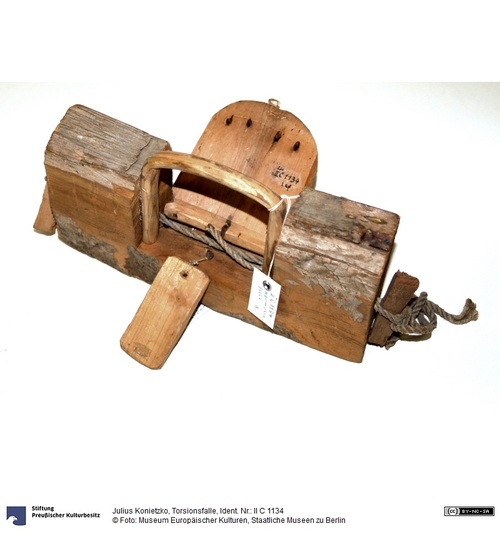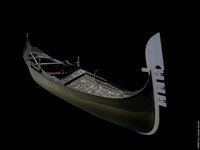Diese Art Ratten- und Mäuse-Fallen („Torsionsfalle“), waren in ganz Schweden, mit Ausnahme der Provinz Skåne verbreitet (in den Jahren 1860-1906). Sie kamen auch in Norwegen, Finnland und in den baltischen Ländern vor. Die Falle wurde mit einem vertikalen Stäbchen gestellt, das an einem dünnen Faden in gespanntem Zustand zwischen Klappbrett und dem Auslöser befestigt war. Das andere Ende des Fadens ist an einem Stab befestigt, welcher in einem Holzblock befestigt ist. Das Klappbrett, welches auf die Ratte hinunter fällt, wird mit Hilfe einer groben Schnur oder mit Pferdeschweifhaar gespannt (in dem man sie verdreht) gehalten. Wenn die Falle ausgelöst wird, schlägt das Klappbrett, welches meist mit Nägeln versehen ist, auf den Rattennacken herunter, gegen den festen horizontalen Holzbogen.
Erwerbungsort: Munkefjord, Sør-Varanger, Finnmark, Norwegen
Sammler: Konietzko, Julius
en

